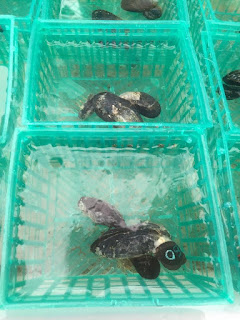Huge Hidden Forests
Northern California is known across the globe for its towering redwood forests. Home to the largest known living tree, Hyperion, at 380 ft. tall, there is no question that this corner of the world has impressive natural habitats. In the shadows of these giants, however, lies a different type of forest, equally as impressive as the soaring sequoias. While there are no billboards and gift shops off the main highway heralding its beauty, it is an essential part of the history of northern California communities.
Northern California kelp forests are hotspots of marine biodiversity. Growing along cool, rocky shores, the “trees” of this forest are a species of brown alga called bull kelp. The animals that inhabit bull kelp forests have sustained booming tourism sport fishing industries for decades, and Tribal communities since time immemorial. Hundreds of people for hundreds of years have molded their lives around bull kelp forests, harvesting the seemingly endless supplies of fish, invertebrates, and algae living among the kelp fronds. That’s why it was such a shock when the forests disappeared.
A series of stressful oceanographic and ecological phenomena destroyed bull kelp populations (Figure 1). First, warm waters killed existing bull kelp, then a COVID-19-esque epidemic (Sea Star Wasting Syndrome) killed the predators that reduce kelp herbivores. Now these herbivores, especially purple sea urchins, roam freely and devour any kelp plants that sprout up, preventing the recovery of the habitat-forming species.
Figure 1: California Department of Fish and Wildlife aerial kelp survey results. Bull kelp primarily exists in the North Coast Mainland and North Central Mainland areas, shown in purple and green. The marine heat wave started in 2013 and bull kelp has not recovered since then. https://wildlife.ca.gov/Conservation/Marine/Kelp/Aerial-Kelp-Surveys
Communities Respond to Kelp Forest Devastation
Needless to say, community members are deeply concerned. While rigorous scientific experiments are underway to determine the best kelp restoration strategies, local scuba divers are eager to help. To leverage the power of the masses, as the California Sea Grant Kelp Management Extension Fellow I am helping to lead a community science project using volunteer divers to cull purple sea urchins in one monitored location (Caspar Cove in Mendocino County; Figure 2). The purpose of this project is to investigate whether in-water purple urchin culling by volunteer divers can support kelp regrowth. Results will help managers determine whether this can be a useful kelp restoration tool more broadly. This project is in collaboration with The Waterman’s Alliance, CDFW, the Ocean Protection Council, and Reef Check California.
Figure 2: Location of Caspar Cove in California.
To participate, divers must have a valid recreational fishing license and scuba certification. They can use hand tools to cull subtidal purple sea urchins on the south side of Caspar Cove (areas A–C in Figure 3). They should record details about their dive including how many urchins they culled using this form: https://tinyurl.com/CasparCoveDiveLog. Results are automatically updated every 5 minutes at https://tinyurl.com/CasparCoveDiveLog-data.
Figure 3: Map of legal urchin culling area in Caspar Cove, California. Divers should
focus on areas A–C. Credit: Joe Tyburczy, CASG
We are thankful to have such a supportive community and excited to get recreational divers involved in solutions for kelp forest recovery!
Access the dive log here: https://tinyurl.com/CasparCoveDiveLog
Live results:






